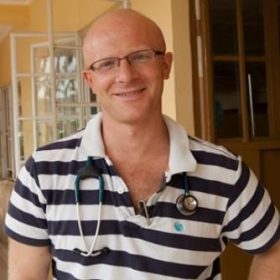Background
Management of the COVID-19 pandemic relies strongly on a mass-scale vaccination programme the likes of which the world has never seen. Here in the UK, GP practices, pharmacies and mass vaccination centres have needed to adapt or be set up quickly in order deliver the volume and rate of vaccinations required to keep the virus under control within the population. This has led to significant resourcing needs and changes to ways of working to facilitate such a programme.
The Health Service Modelling Associates (HSMA) Programme has been running since 2016. The programme trains and supports staff working in health, social care and policing settings to use modelling, simulation and data science techniques to help inform decisions about service configurations to improve efficiency and patient outcomes.
As part of the third round of the HSMA programme, we supported one of the HSMA students – Dr Adam Kwiatkowski (GP and Clinical Director, Torridge Health Primary Care Network) to develop a generic simulation model for the delivery of COVID-19 vaccinations.
Aims
The aims of the project were to :
- develop a quick and simple vaccination model that could be initially used by Torridge Health Primary Care Network to understand the resourcing needs and waiting times for the volume of patients needing to be vaccinated per day.
- extend the development of the model to a generic structure that can be used by anyone running a vaccination service to understand the resourcing needs, waiting times, car park capacity and risk of social distancing breaches for a given volume and rate of incoming patients requiring vaccination.
- release the extended model as Free and Open Source (FOSS) software that can be used and developed by anyone, anywhere in the world.
Activity
An initial version of the model was developed by Dr Kwiatkowski in December 2020, for use with his local vaccination service. The model was used to help inform initial decisions about the configuration of their local vaccination service (see outputs section below). In February 2021, Dr Kwiatkowski began work on an expanded and generic version of the model, with support and advice from his HSMA Programme Mentor – Dr Daniel Chalk. The model was completed in April 2021.
The new model allows users to specify the individual steps in the vaccination service, the resources available for each step, the type of vaccine being given (as mRNA-based vaccines require a 15 minute observation step in the process), the number of patients that need to be vaccinated in the session and their rate of arrival, the car park capacity, utilisation and distance from the centre (if applicable), and any steps in the vaccination process that happen simultaneously.
The model predicts the queue lengths and queuing times for each step in the vaccination process, and the estimated percentage of time that vaccination centre areas (including the car park) are likely to breach capacity. This allows planners to determine if the given resources and rates of incoming activity will result in lengthy waits and / or overcrowding in the centre.
The model was developed using the Python programming language, and the Python-based SimPy framework for Discrete Event Simulation models. The model has been made available as Free and Open Source software for others to use and even develop further if needed.
Impact
The initial model predicted a number of issues that Torridge Health Primary Care Network might encounter in the delivery of their vaccination service, including that they were not able to support their initial estimates for vaccination volumes per day due to the predicted overcrowding of the observation area required post-delivery of mRNA vaccines. The service used the model results to quickly reorganise the delivery of vaccinations during the initial phases of the vaccine rollout.
Since the development of the expanded model, Dr Kwiatkowski has been working with a number of local trusts and vaccination centres to help them use his model to support their vaccination service delivery. We are also working with the South West Academic Health Science Network (AHSN), as well as PenARC GP Partners, to explore the wider rollout of the model across the region.
Due to the way in which the model has been developed as a generic vaccination service model, it is anticipated that the model could support the delivery of both ongoing COVID-19 vaccinations in future years, as well as other large-scale vaccinations, including annual flu vaccinations.
Next steps
A paper is currently being written for submission to peer-review to promote the work nationally and internationally.
Resources
Collaborators
- Dr Adam Kwiatkowski, GP and Clinical Director, Torridge Health Primary Care Network
PenARC Staff

Dr Alex Burns
Making Sense of Evidence Programme Tutor